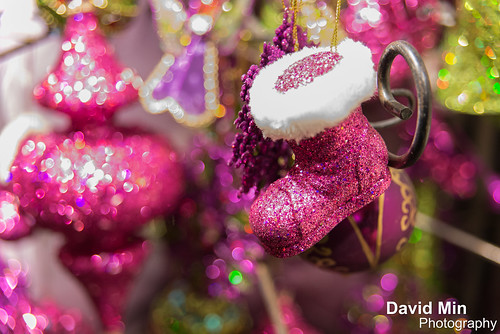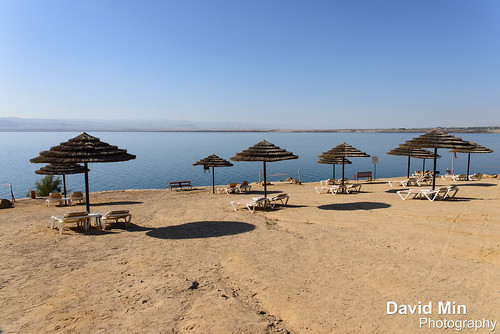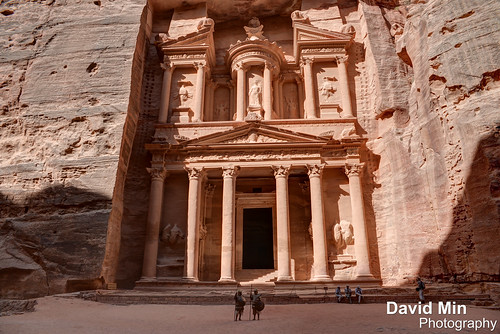The name of the city derives from the name of the pool around the Golden Temple (aka Harmandir Sahib) and means "holy pool of nectar". It is the spiritual and cultural center of the Sikh religion, and they are rightfully very proud of the city and their very beautiful and unique Gurdwara (place of worship).
The Golden Temple was initiated by Guru Ramdaas Ji, the fourth Sikh Guru, and completed in 1601 by his successor Guru Arjan Dev Ji. It is now a major pilgrimage and tourism center.
The Golden Temple is the main attraction in the city, and the most important religious place to the Sikhs. It's a stunning complex, and always full of thousands of pilgrims from all over India, excited to be at a place that they usually only see on television. The excitement to be here is infectious, and many people will be more than happy to tell you all about their religion and customs, and show you around the temple itself. Cover your head, remove your shoes and wander around one of the most amazing places in India. The complex is open almost 24 hours (from 6AM until 2AM) and is worth visiting twice: once during the day, once at night, when it's beautifully lit up.
As you arrive near the complex, you will more likely than not be accosted by hawkers trying to sell you bandannas to cover your head. It's not a bad souvenir for Rs.10, but there's also a big barrel of free ones to choose from at the entrance itself. Deposit your shoes at the subterranean building to the left of the entrance, wash your feet at the entrance and head in.
The World Through My Eyes !
My best photos from around the world !
Saturday, March 15, 2014
Amritsar, India - Golden Temple
Tuesday, December 31, 2013
Vienna, Austria - Happy New Year !
Happy New Year !!!
Thursday, December 26, 2013
Vienna, Austria - Rathausplatz Christmas Market
If you are lucky enough to go to Vienna in November or December, you must browse through the traditional Christmas markets that are located all throughout the city. There are many, but among them are the Schönbrunn (next to the famous palace), and, above all, located in the Town Hall Square, the very center of the city (getting there is easy, both metro and tram). many different items are on sale at this market, though it is devoted mainly to Christmas decorations and to candy. Toys, books, textiles and glass are some other products that you can find (on the web you can find a list). To combat the winter cold, it's best to try a typical Punsch (without alcohol) or Glühwein (although I admit that to me either I came to like too much), and go with some sweet. It's a good place to get lost in the city, especially for the evening, when all of the stalls are open and there is an especially fun atmosphere.
Saturday, October 19, 2013
Dead Sea, Jordan
The Dead Sea, also called the Salt Sea, is a salt lake bordering Jordan to the east and Israel and Palestine to the west. Its surface and shores are 423 metres below sea level,Earth's lowest elevation on land. The Dead Sea is 377 m deep, the deepest hypersaline lake in the world. With 33.7% salinity, it is also one of the world's saltiest bodies of water, though Lake Assal (Djibouti), Garabogazköl and some hypersaline lakes of the McMurdo Dry Valleys in Antarctica have reported higher salinities. It is 9.6 times as salty as the ocean. This salinity makes for a harsh environment in which animals cannot flourish, hence its name. The Dead Sea is 55 kilometres long and 18 kilometres wide at its widest point. It lies in the Jordan Rift Valley, and its main tributary is the Jordan River.
The Dead Sea has attracted visitors from around the Mediterranean basin for thousands of years. Biblically, it was a place of refuge for King David. It was one of the world's first health resorts (for Herod the Great), and it has been the supplier of a wide variety of products, from balms for Egyptian mummification to potash for fertilizers. People also use the salt and the minerals from the Dead Sea to create cosmetics and herbal sachets.
The Dead Sea seawater has a density of 1.240 kg/L, which makes swimming similar to floating.
Monday, October 14, 2013
Petra, Jordan - Al Khazneh ("The Treasury")
Al Khazneh ("The Treasury") is one of the most elaborate temples in the ancient Jordanian city of Petra. As with most of the other buildings in this ancient town, including the Monastery (Arabic: Ad Deir), this structure was carved out of a sandstone rock face. It has classical Greek-influenced architecture, and it is a popular tourist attraction. Al Khazneh was originally built as a mausoleum and crypt at the beginning of the 1st Century AD during the reign of Aretas IV Philopatris. Its Arabic name Treasury derives from one legend that bandits or pirates hid their loot in a stone urn high on the second level. Significant damage from bullets can be seen on the urn. Local lore attributes this to Bedouins, who are said to have shot at the urn in hopes of breaking it open and spilling out the "treasure"—but the decorative urn is in fact solid sandstone). Another is that it functioned as a treasury of the Egyptian Pharaoh at the time of Moses.
Many of the building's architectural details have eroded away during the two thousand years since it was carved and sculpted from the cliff. The sculptures are thought to be those of various mythological figures associated with the afterlife. On top are figures of four eagles that would carry away the souls. The figures on the upper level are dancing Amazons with double-axes. The entrance is flanked by statues of the twins Castor and Pollux who lived partly on Olympus and partly in the underworld.
Monday, September 30, 2013
Petra, Jordan - Al Khazneh ("The Treasury")
Al Khazneh ("The Treasury") is one of the most elaborate temples in the ancient Jordanian city of Petra. As with most of the other buildings in this ancient town, including the Monastery (Ad Deir), this structure was carved out of a sandstone rock face. It has classical Greek-influenced architecture, and it is a popular tourist attraction.
Al Khazneh was originally built as a mausoleum and crypt at the beginning of the 1st Century AD during the reign of Aretas IV Philopatris. Its Arabic name Treasury derives from one legend that bandits or pirates hid their loot in a stone urn high on the second level. Significant damage from bullets can be seen on the urn. Local lore attributes this to Bedouins, who are said to have shot at the urn in hopes of breaking it open and spilling out the "treasure"—but the decorative urn is in fact solid sandstone). Another is that it functioned as a treasury of the Egyptian Pharaoh at the time of Moses.
Many of the building's architectural details have eroded away during the two thousand years since it was carved and sculpted from the cliff. The sculptures are thought to be those of various mythological figures associated with the afterlife. On top are figures of four eagles that would carry away the souls. The figures on the upper level are dancing Amazons with double-axes. The entrance is flanked by statues of the twins Castor and Pollux who lived partly on Olympus and partly in the underworld.
Saturday, September 28, 2013
Madaba, Jordan - King Hussein Mosque
Madaba is the capital city of Madaba Governorate in central Jordan, which has a population of about 60,000. It is best known for its Byzantine and Umayyad mosaics, especially a large Byzantine-era mosaic map of The Holy Land. Madaba is located 30 kilometres south-west of the capital Amman.The first mosaics were discovered purely by chance during the building of the new permanent dwellings using squared-up stones from the old monuments.
The new inhabitants of Madaba, made conscious of the importance of the mosaics by their priests, made sure that they took care of and preserved all the mosaics that came to light.
The northern part of the city turned out to be the area containing the greatest concentration of mosaic monuments. During the Byzantine-Umayyad period, this northern area, crossed by a colonnaded Roman road, saw the building of the Church of the Map, the Hippolytus Mansion, the Church of the Virgin Mary, the Church of Prophet Elijah with its crypt, the Church of the Holy Martyrs (Al-Khadir), the Burnt Palace and the Church of the Sunna' family.






